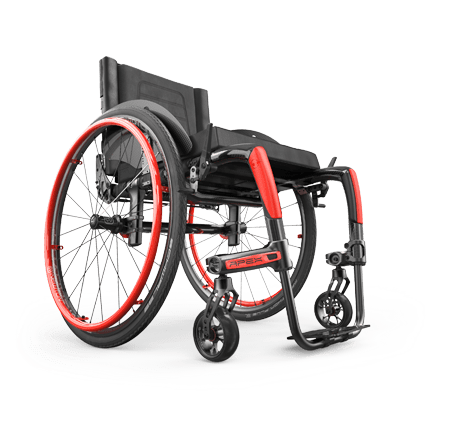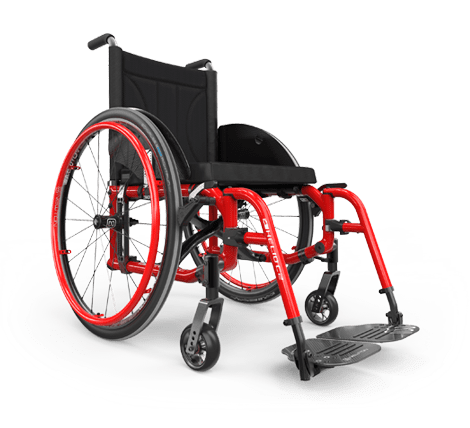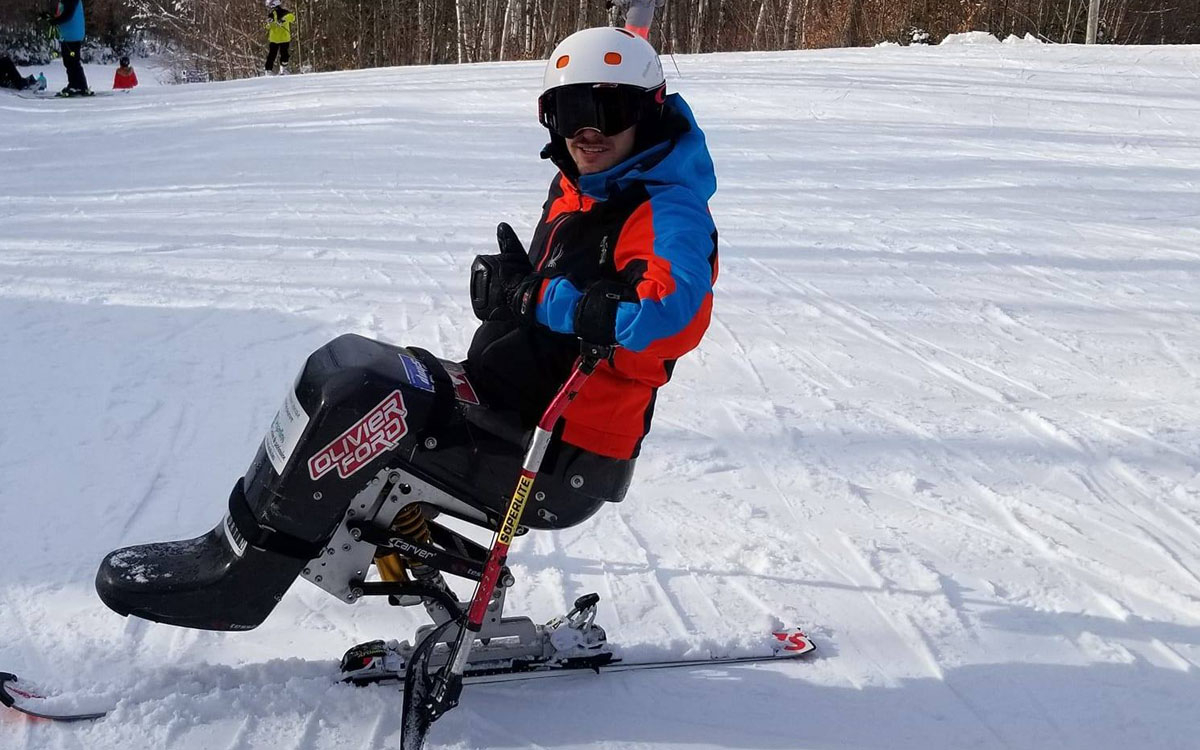For anyone that does not believe us, we have two words to change your mind: Winter sports! They are the main reason why soooo many people love this time of year! In fact, the list of winter activities that one can participate in is quite extensive: Ice-skating, skiing, sledding, hockey, are just a few to mention. When we talk about adaptive sports, many people tend to think about traditional summer sports, such as handcycling or wheelchair basketball, but being in a wheelchair does not mean that you cannot go out and enjoy the winter! There are plenty of adaptive winter sports that you can enjoy with your family and friends as well!
If you are new to the adaptive sports, we know that for some wheelchair users is not easy to know where to start; there are questions on how to obtain affordable equipment, how to transport sed equipment, let alone how to master the technique of the actual sport! For this reason, we recommend you make sure to read the article our friend and colleague Christopher Collin wrote (Tips for a fun journey into the adaptive sports world) last year. He provides us with some interesting tips to help you make the transition into the adaptive sports world and have a good time in the process.
Today, we catch up with our brand ambassador Jeremy Landry. He is an active and passionate person who lives a life filled with fun and adrenaline! He is the type of person who is always on the hunt for new opportunities to explore and new adventures to embark on; thus, making him a perfect candidate to share his perspective on a hip and invigorating wintertime adaptive sport, mono-skiing.
Before we get into Jeremy’s tips and tricks, lets give a refresher to our people who exactly is Jeremy Landry?
When Jeremy was only 18 years old, he was in an accident that resulted in his spinal cord injury, putting him in a wheelchair for the rest of his life. Determined by his love of sports and destined by his geographical location (Canada), Jeremy was searching for a wintertime, adaptive outdoor activity that he could enjoy; enter Mono-ski! Fast forward to present day, Jeremy is an enthusiastic athlete who was a part of the development team of Team Canada, and he can be considered as one of the elites within the local community.
BEFORE WE BEGIN— A FEW FAQS ANSWERED
What is mono-skiing?
Mono skiing is a form of skiing with a single wide ski. It works in a similar as alpine skiing, since you use the same boots, bindings and poles (outriggers).
Because the sport it intended for people with disabilities, the participant is skiing in a seated position.
How do I know if I can practice mono-skiing?
The mono-ski was designed for individuals that have exceptional upper- body strength, good balance, and some torso mobility. This makes people with double extremity amputations, spina bifida, or other spinal cord injuries good candidates for the sport.
Learn more about adaptive skiing here.
Adaptive skiing
Motion Composites: Do you have a routine when you are going to go skiing with your family? If yes, what is it?
Jeremy Landry: It is like everyone else, I make sure to wear the proper clothes, the proper equipment and then I get in the ski. It is pretty simple.
Talking about my family, this is the first year that my son will be able to practice skiing! I am very excited, because from now on we will be able to go skiing all together as a family.
MC: What are your essentials when you go skiing?
JL: As I mentioned earlier, being dressed properly is a MUST to go in the cold weather. Obviously, another essential would be to bring my mono-ski and the outriggers (laughing), the rest is standard (the helmet, goggles, etc.).
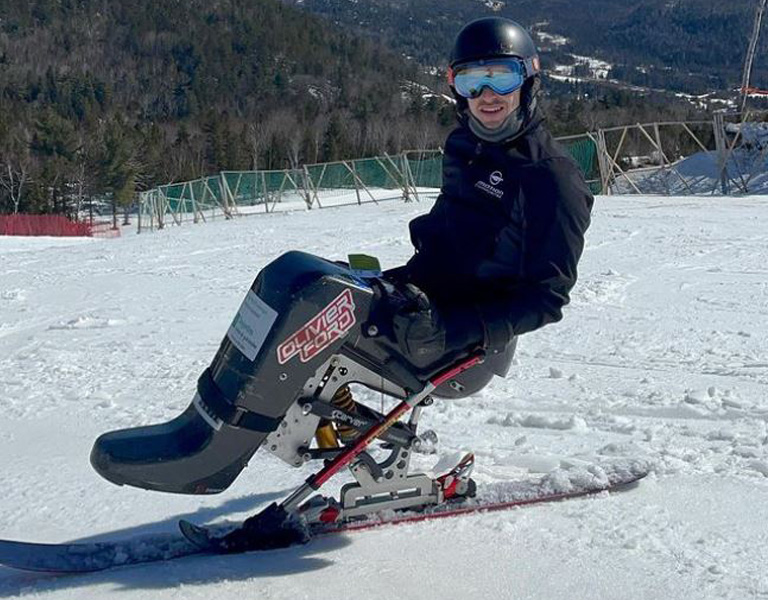
Photo : Jeremy Landry
MC: When you are skiing: are you doing it together with your kids? Do you have safety tips for parents with young kids? What technique is best?
JL: There are some basics on safety while skiing with your kids. Like, making sure that they have the proper equipment and that they are properly dressed for the freezing temperatures.
If your kids just started learning, make sure that they go in the slopes that are good for them, according to their skill level.
Also, falling is a thing that comes with learning how to ski. Don’t over stress if they fall, and make sure that they know how to get up safely.
In general, it’s more complicated than skiing on your own, I will also suggest bringing members of your family that can help you check on your kids.
MC: Do you have a favorite spot to go skiing?
JL: In Quebec I love the Mont Saint-Côme. It is small and it is perfect to go enjoy it with your family.
In Canada, my favorite spot would be the Sunshine Village, in Banff. When I was in the team Quebec and team BC and later the development team on team Canada, I got the opportunity to go skiing all over the world, but Sunshine Village was by far my favorite, it was just magical.
MC: How do you get to the slopes (which transportation method you use)? Both for you and your family and the equipment?
JL: The equipment takes a lot of space, so I would suggest using an SUV or a pickup. Personally, I own a pickup and that’s the transportation mode that we use.
MC: How do you get back up to the top of the mountain once you complete a run?
JL: The way that the mono-ski is made, it has a cylinder in the suspension and when you take off the lock you can sit like everybody else in the chairlift and go uphill again.
MC: Are there any accessible aspects that you need to consider?
JL: For sure, not all the mountains are adapted for this. Sadly, for Canada, there are more places that are adapted in the west of the country (of course they have bigger ski villages there), than in the east.
For the ones that are not fully adapted you may need to bring your chair out in the snow, which is not ideal, and re-enter in the chalet more often, but it is still possible to go skiing pretty much anywhere.
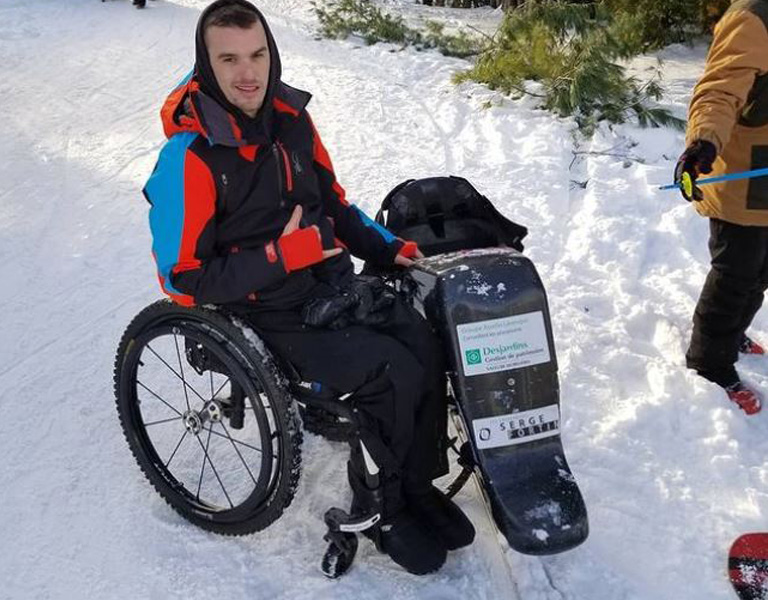
Photo : Jeremy Landry
MC: Do you have your own equipment? Is this something that we can rent?
JL: You can rent it in some ski villages. I will suggest contacting them prior your arrival and making sure they will have the equipment available for you.
In the ski villages that we visit, like Saint-Côme, you can rent it. You are even able to get an instructor if needed. Other ski villages that may offer rentals for adaptive skiing are Mont Avalanche and Mont-Tremblant.
Talking about pricing for renting the equipment, just as with the regular equipment, it depends on how much time you rent it. And the rental price is not that bad (varies in between $40-60 CAD for a single day).
However, if you want to buy it, like me, it is really expensive. Mine cost around $15,000. But you can find some in between $6,000 and $13,000 often. Depends on the type of structure that you are looking for.
MC: How do you maintain your equipment so it can be re-used each year?
JL: I make sure to clean everything good; Also, you do need a certain tune-up in the suspension. It mostly depends on what kind of suspension you use. But I would suggest making sure to check the binder in your ski (this is the hardware under your seat). It is imperative to check this specific part because you are putting a lot of pressure on the same ski, so you need to make sure that the hardware under it is not broken. If not, you will be skiing on a big accident waiting to happen.
MC: Do you have any safety tips?
JL: While skiing, be aware of your surroundings. Always check around and respect the space between you and other people skiing.
Except for that, I am pretty much a daredevil, so I don’t have more tips (laughing). I am more the “hit or miss” kind of guy. I am not a big fan on safety, it is not my thing.
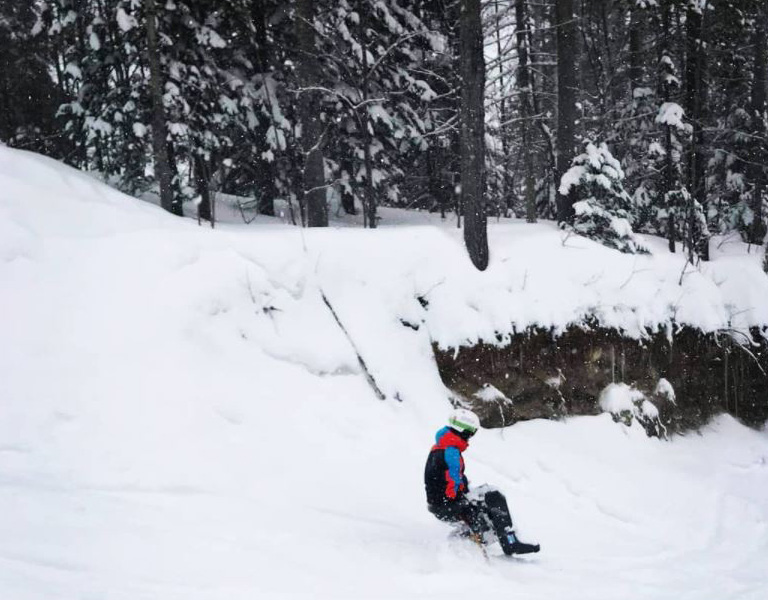
Photo : Jeremy Landry
MC: What do you like to do after a day practicing skiing?
JL: I love to enjoy a good cold beer with a warm “soupe à l’oignon” (french onion soup) in the ski lodge! It is a must! I love the “après-ski”!
MC: Any last recommendations?
JL: One last recommendation, just enjoy it and have fun! Don’t be afraid to try it! It is the ski and the adaptive sports that helped me overcome my accident. Sports are good for your body and mental health. Go on and try it!
As you can see, skiing is an activity that everyone can enjoy. Make sure to check the resource links in the next section and enjoy the winter wonderland!
Motion Composites would like to thank our amazing brand ambassador Jeremy Landry for taking the time in his busy dad schedule to chat with us. We wish you and your family tons of snowy ski trails and great powder for the remainder of season!
References
Canadian Ski Council. (n.d.). Canadian Ski Council - Accessible Skiing Information. Retrieved January 2022, from https://www.skicanada.org/ready/accessible-skiing-information/
Canadian Ski Council. (n.d.). Canadian Ski Council - Safety Tips for Parents. Retrieved January 2022, from https://www.skicanada.org/safety/safety-tips-for-parents/
International Paralympic Committee. (n.d.). International Paralympic Committee - Jeremy Landry. Retrieved November 2021, from International Paralympic Committee: https://www.paralympic.org/jeremy-landry
WINTERGREEN ADAPTIVE SPORTS. (2021, November 01). WINTERGREEN ADAPTIVE SPORTS. Retrieved from WINTERGREEN ADAPTIVE SPORTS - MONO SKI: https://www.wintergreenadaptivesports.org/mono-ski




